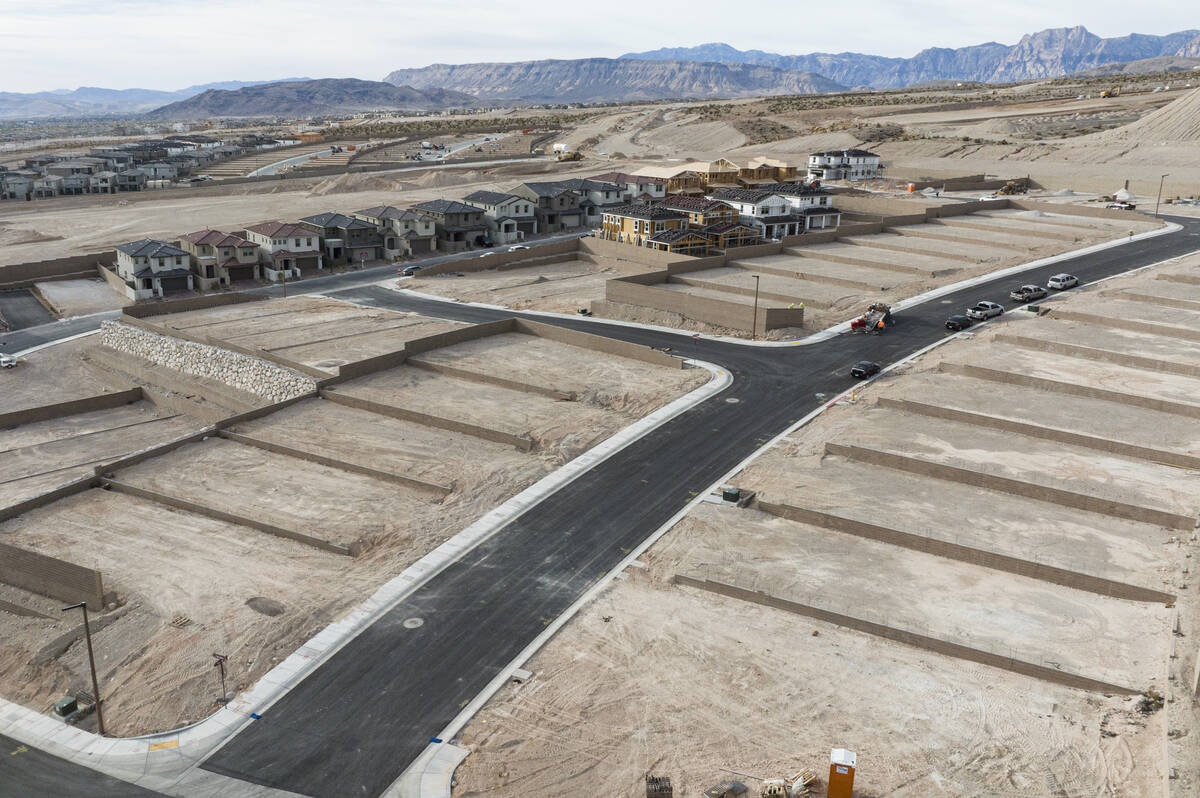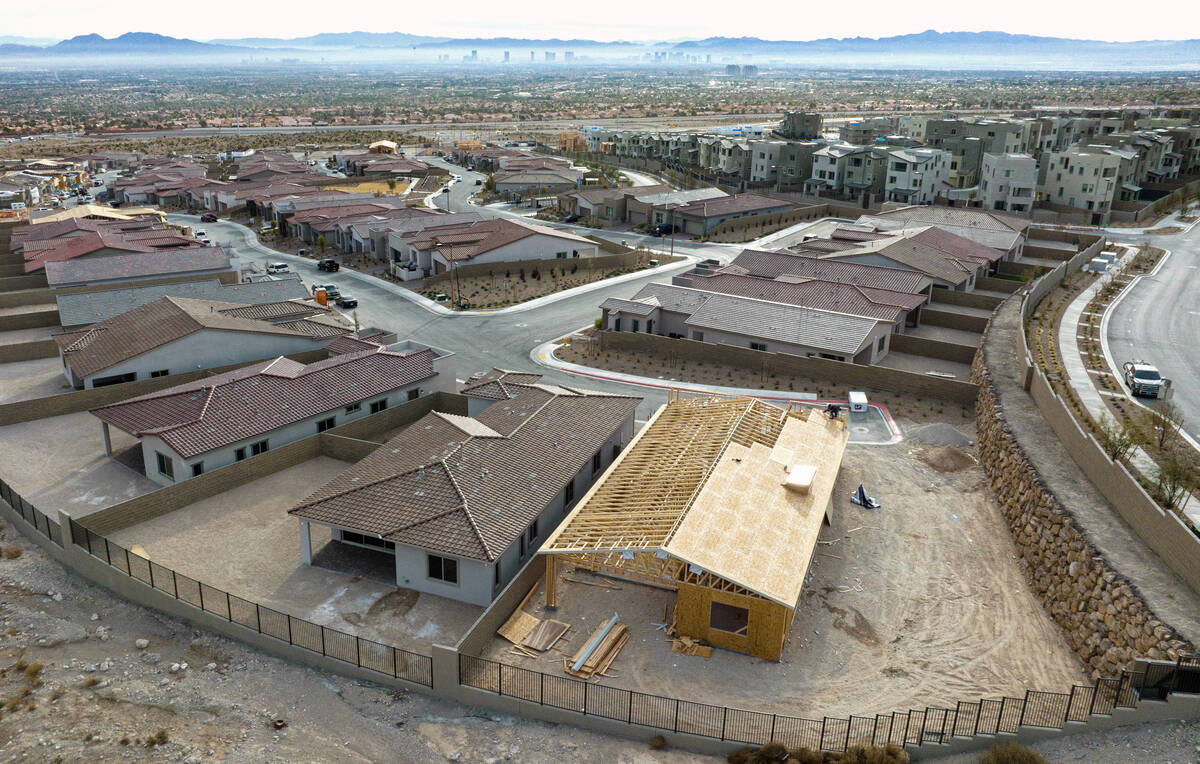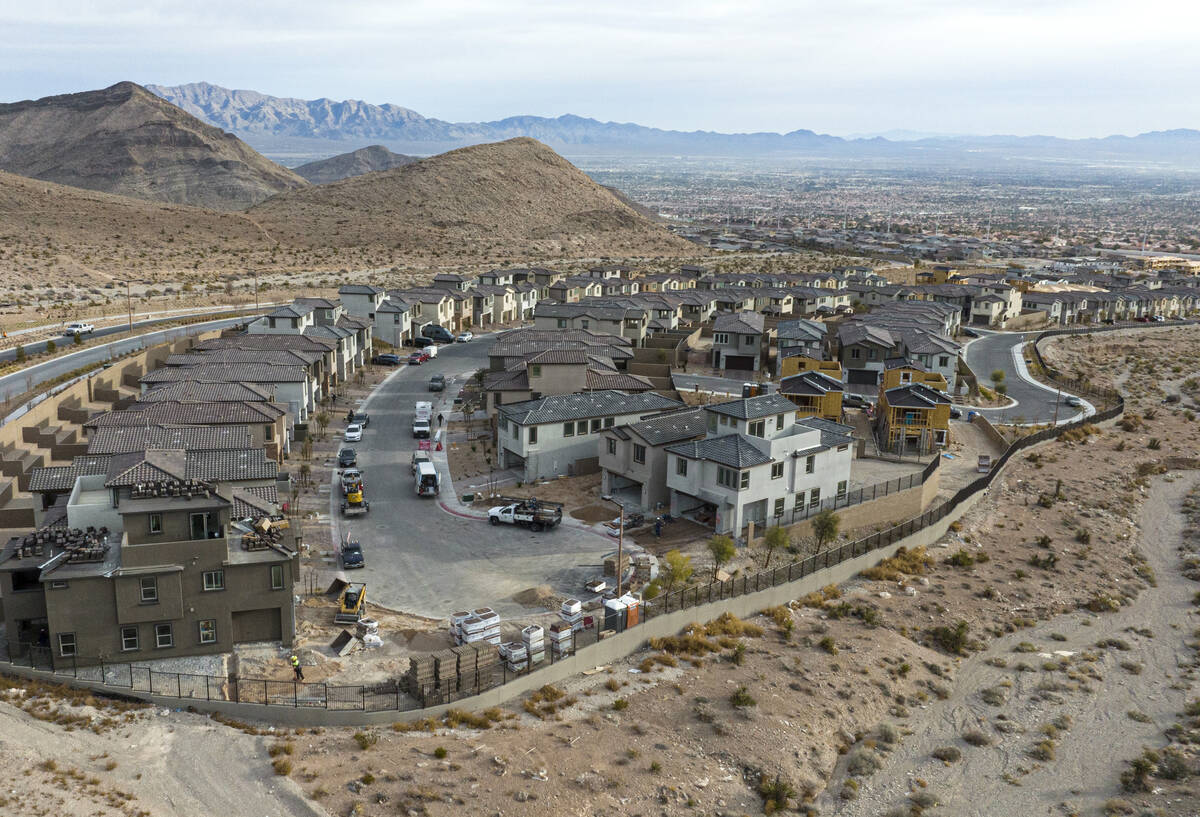‘Headwinds ahead’: Market downturn looms in Vegas amid rising construction costs
The developer of a dual-branded hotel, which recently broke ground in downtown Las Vegas, says building these days is anything but easy.
“Development over the last few years has been complicated,” said Joe Blewitt, senior vice president for hospitality development at JacksonShaw, which owns both the dual-branded AC and Element at Symphony Park and the Renaissance Las Vegas Hotel. “The good news is we are starting to see construction pricing level out, and contractors are presenting more flexibility in holding pricing.”
Heightened construction costs and a lack of workers continue to bite the valley residential and commercial real estate sector, part of a larger trend that has seen increased costs across the board since the onset of the pandemic.
Commercial construction prices in Las Vegas have risen by as much as 30 percent since 2020, outpacing the previous three years’ growth, according to a Construction Analytics report.
But both sides of the Las Vegas Valley real estate industry have been dealing with increased costs since the Covid-19 pandemic, as a Producer Price Index report showed that residential construction costs are still up by at least 10 percent since 2020. However, there was a substantial drop in the price of raw materials in 2023 that may play out further in 2024.
A tepid global economic outlook this year, though, with fears of a recession once again on everyone’s minds means a bounce back or recovery is highly unlikely, industry experts say, and another year of slower growth and construction starts coupled with increased costs is most likely to play out in the valley construction industry.
Labor remains tight
Kent Lay, the Las Vegas division president at Taylor Morrison, one of the nation’s largest homebuilders and developers, said construction prices have leveled off the past few quarters, but it’s a mixed bag when it comes to raw materials. The homebuilder has 13 communities in the Las Vegas Valley.
“We had a bit of an increase in terms of commodities, mainly concrete. Lumber really spiked (in 2022), but lumber has since come down, but the main thing that has improved is a lot of the supply chains,” he said. “We continue to monitor raw material costs, which have traditionally been the most vulnerable for our industry. Lumber has been the most volatile in the past. We are currently experiencing price increases for drywall.”
When it came to finding workers for construction sites, Lay said last year was definitely better than 2022, but the market remains “tight.” He said he doesn’t expect it to change in the near future. Wage growth has grown substantially as workers are able to demand higher pay because of a lack of skilled labor within the industry due to a surge of retirement during the pandemic, he said.
“We had less of a problem last year carrying labor than we have had in the past few years, but it’s definitely still going to be an uphill battle when it comes to homebuilding.”
Lay said there are a number of positive signs on the horizon, including the recent opening of the Southern Nevada Trades High School.
“Our industry, trade, and vendors are all working on ways to attract more labor,” he said. “It is designed to attract students from grades nine through 12 into the construction industry. The pay for labor has also risen over the last few years, some highly skilled laborers can obtain a salary in the low six figures.”
How Las Vegas Valley lands among the nation
Las Vegas falls somewhere in the middle in terms of overall increases in residential and commercial construction prices globally, according to a study from Compare the Market AU, which has the valley’s costs up 20 percent in three years, however it only includes houses, apartment complexes, skyscrapers and commercial office spaces.
James McCay, a digital PR advisor with Compare the Market AU, said Las Vegas is a bit below the national average for cost increases from 2020-23, below New York (26 percent), Washington (24 percent) and Phoenix (23 percent).
“Looking at the data, Las Vegas’ increase in building costs was roughly in the middle just under the median,” he said of the global outlook. “All other American cities in our list had higher average cost increases. Looking at cities outside the U.S., Las Vegas had higher average building cost increases than cities in Australia and UK cities, but lower than Canada, Singapore, and Prague which had the highest.”
A Wells Fargo November Construction report keyed on two specific sectors that have been propelling the American construction industry as of late — single-family residential builds and commercial manufacturing buildings.
A Colliers International fourth-quarter report noted the Las Vegas Valley had a record-breaking quarter for industrial completions, and that 70 percent of the industrial projects completed last year were pre-leased before the building was finished.
John Stater, the author of the Colliers research report, did acknowledge potential tough times ahead, however.
“In the short term, there could be a recession in 2024, but the long-term picture looks strong provided efforts to reduce inflation continue.”
Charlie Dougherty, a senior economist with Wells Fargo, said despite a few industry bright spots, the overall U.S. construction industry is much like the overall economic outlook in 2024, slowing growth amid a “deteriorating macroeconomic backdrop.”
Major markets such as Europe and China have seen slowing economic growth the past few years, inflation is still up in a number of developed nations and central banks still have their hands on the levers of monetary policy in keeping interest rates high, all contributing to global growth “downshifting,” he said. This is on top of ongoing geopolitician tensions in Ukraine and the Middle East contributing to a tepid outlook.
And the Las Vegas Valley construction scene will invariably be impacted, he said.
“The construction industry looks like it is going to be encountering some headwinds moving into 2024,” Dougherty said. “Althought that’s not to paint with too broad a brush, but I think that can generally be said, and the big reason why is because construction is highly cyclical and what we’re looking for in terms of the overall trajectory of economic growth is we’re heading for a slowdown in 2024 and potentially a mild recession.”
Dougherty did say the American economy has been resilient the past year as inflation has waned and that while there is talk of a recession in 2024, it can not be compared to the last two, in 2008-09, and during the Covid pandemic.
“It’s a mild recession we’re predicting,” he explained, “short and shallow.”
Contact Patrick Blennerhassett at pblennerhassett@reviewjournal.com.





















